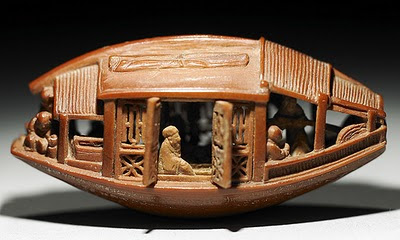| Niu Rou Mian |
In America, we may choose to serve Niu Rou Mian as a soup with a meal, but here in Taiwan it’s a meal unto itself. It is usually served in a large bowl with no other dishes. It is enough to sustain you. I like it best when the weather is cold and rainy. The hot delicious soup warms you up and takes the chill off, while the aromatic, spicy flavor clears your sinuses.
There are two varieties of Nui Rou Mian that are found in Taiwan. There is the version described above, this is the type most commonly found. But there is another type. The second version contains red pepper to make the meal spicy. The meat is sometimes stir fried in hot sauce. If you are person who likes spicy hot food, then this is the version for you. I like both types and eat both as often as possible.
Most convenience stores carry an instant version. In these, you add hot water and allow it to steep for a period of time. Both the spicy and regular versions are readily available. As with all preprocessed foods, quality is as variable as the number of brands that are available. But don’t misunderstand me; some of these are very delicious, with a flavorful soup and thick noodles. Of course, the beef in these is pretty scarce and the chunks are very small.
| One of Bian Yi Liu's other tasty dishes: Seafood Rice |
I only found this restaurant because I’m a foreigner, who doesn’t read Chinese. It is located across the parking lot from a brand new building. I had seen that building many times and thought it might be a nice restaurant to take my wife for dinner. (It has that restaurant look, slanted walls, lots of greenery and large trees.) So one night we ditched the kids and went out on our own, and I thought I’d surprise her by taking her to this beautiful new restaurant…except it wasn’t a restaurant, it was a place where they sold some new homes. They directed me across the parking lot to Bian Yi Liu, where I was delightfully surprised.
If you are around Taoyuan, you may want to check it out: Bian Yi Liu, Jie Shou Lu, 459, Taouan City, (03) 362-7968. Tell them that you saw it in The Taiwan Adventure Blog, or that Chris sent you, or better yet, email me and I'll go with you...your treat. .By the way, I wasn't paid for this shameless plug.
Other posts you might be interested in:
Eating My Way Through Taiwan: Buddha Jumps Over the Wall
Cultural Unawareness: Cultural Explosions
Eating My Way Through Taiwan: A Traditional Restaurant



